If you want to travel to China, but you are worried about spending too much, then the cheap China package deals are very suitable for you. In the 12-day journey, you will cross many provinces in China to appreciate China’s beautiful natural scenery and feel the unique charm of Chinese culture. Have you heard of Bruce Lee and Jackie Chan? Are you interested in 12 days cheap China tour with Kung Fu? When it comes to Kung Fu, we have to talk about Shaolin Temple in Henan province. During this journey, you will have an opportunity to learn Kung Fu and feel the fascination of Kung Fu. Besides, cheap Shanghai tours will satisfy your yearning for a metropolitan city. You will visit the Oriental Pearl Tower, the Bund, and other landmarks in Shanghai and learn about the development of Shanghai. This journey is worthwhile, come and join us!

Welcome to Beijing! Our guide will pick you up at the airport and transfer you to the hotel. It is all known that as the capital of China, Beijing is also the capital of the last 2 feudal dynasties in Chinese history, the Ming Dynasty (1368-1644) and the Qing Dynasty (1636-1912). We not only look back into the past but also see the modern development of Beijing. Nowadays, Beijing has a total area of 16,800 square kilometers and a population of 11.5 million. You will be amazed at the magnificent spectacles of Tian’anmen Square and the Forbidden City and will be attracted by the life of Beijing people living in the Beijing Hutong. Here, you will spend less money to enjoy our value-added services, so stay tuned!
After breakfast, your journey will start at Tian’anmen Square. Located in the center of Beijing, Tian’anmen Square is the largest city center square in the world. Here, we can appreciate the scenery of many famous buildings. On the west side of the square is the Great Hall of the People. Located in the north, Tian’anmen Gate Tower is a symbol of New China. It was here that Chairman Mao announced to the world that the People’s Republic of China was founded on October 1, 1949. On the east side of the square stands the National Museum of China, and in the middle of the square stands the Monument to the People’s Heroes. Tian’anmen Square is an important place for China to hold major celebrations and grand gatherings, and it has also become an important viewing spot for tourists.
Passing through the Tian’anmen Gate Tower, you will come to the Forbidden City (closed each Monday), the palace where 24 emperors of the Ming and Qing dynasties of China dwelled. According to its layout and function, the Forbidden City is mainly divided into two parts – the outer court and the inner court. The outer court is the place where the emperor wielded executive powers and major ceremonies were held while the inner court is the place where the emperor and his concubines lived and entertained. As one of the three major palaces of the inner court, the Palace of Earthly Tranquility is the palace where the empress lived. In the late Qing Dynasty, the empress and the emperor needed to live in it for several days during their wedding. After that, the empress didn’t live in it anymore. Continue to explore, and you will find that in addition to the countless palaces in the Forbidden City, there are also 308 water tanks. Are these water tanks just for decoration? Of course not. As one of the fire extinguishing equipment in the palace, these water tanks were usually filled with clean water to prepare for firefighting. Nowadays, many tourists always like to touch them for blessing.
Then, you will visit Jingshan Park. It was originally the royal garden of the Yuan (1271-1368), Ming and Qing dynasties. Feudal emperors often came here to admire flowers, practice archery, climb mountains and appreciate the scenery. Now it is the best place to climb high and overlook the exquisite scenery of the Forbidden City.
After visiting Jingshan Park, you will come to Shichahai scenic area, which has been a place for fun and entertainment in summer since the Qing Dynasty. Then you will take a rickshaw to visit Beijing Hutong. If you want to truly understand the life of Beijing people, you have to visit Beijing Hutong (a small alleyway) and Siheyuan (a quadrangle courtyard). Entering the Hutong, you may find that almost all the walls and bricks are gray. In fact, behind these walls are local residents’ homes, which we call “Siheyuan”, a traditional residential form in Beijing.
The last stop today is the Summer Palace. The Summer Palace was a royal garden during the Qing Dynasty in China and is known as the “Royal Garden Museum.” A famous bridge called Seventeen-Arch Bridge was built during Emperor Kangxi’s reign (1662-1722). It is 150 meters long and has 17 bridge arches. Since number 9 was a symbol of authority in ancient China, why was it designed with seventeen arches? It is said that if the bridge was designed with nine arches, it would easily collapse due to the over-large arch. After much deliberation, workers finally thought of a way to solve the problem. That is, the bridge could be designed with seventeen arches. Counting from either side of the bridge, the highest arch in the middle is the ninth arch. This not only reflected the dignity of the emperor but also guaranteed the quality of the bridge.
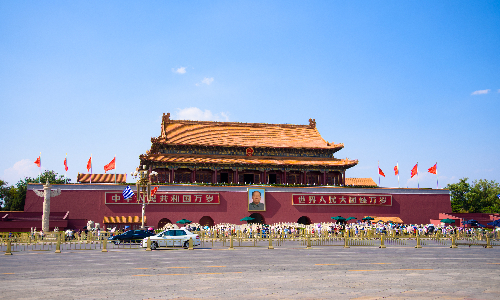
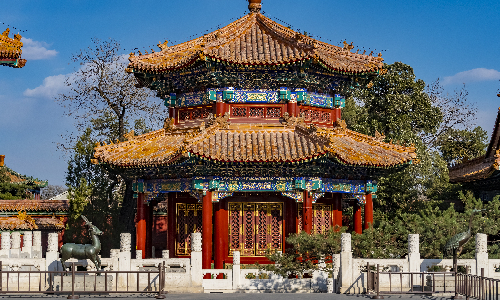
How can you miss the scenery of the Great Wall when you come to Beijing? The Great Wall is the seventh wonder of the world. The Juyongguan Great Wall, built in the Ming dynasty, is over 4,000 meters long. It enjoys great fame in the world so many tourists around the world are attracted to come here to feast their eyes. There is no cable car at Juyongguan Great Wall and you can reach its top on foot. Visitors will not only admire the scenery closely but also save money. If you are a hiking enthusiast, you should come here to experience the Great Wall on foot and understand the meaning of “One who fails to reach the Great Wall is not a hero” personally.
The next stop is the Temple of Heaven. Built in 1420, the Temple of Heaven was a place where emperors worshipped the God (refers to Chinese God) and prayed for the good yield of grains in the Ming and Qing dynasties. But why did emperors worship God? The answer was that in ancient times, Chinese people thought the royal authority of the emperor was given by God, and the emperor took the place of God to manage the people. As the ruler of the country, the emperor would pray to heaven on behalf of the people, hoping that God would bless the agricultural harvest for a year, and the country would be safe and peaceful. The emperor worshipped God at the Temple of Heaven three times a year. The first time was on the fifteenth day of the first lunar month and the emperor prayed for blessings for the harvest at the Hall of Prayer for Good Harvest. The second time was the emperor’s prayer for rain at the Circular Mound Altar in the fourth lunar month. And for the third time, the emperor offered sacrifices to heaven at the Circular Mound Altar on the Winter Solstice in the Northern Hemisphere, thanking God for blessing.
Finally, you will come to the Pearl Market. Here is a paradise for shopping, and all kinds of goods are available, especially pearls which are famous around the world. Here you can buy unique Chinese costumes and bags, and feel the charm of Chinese culture!
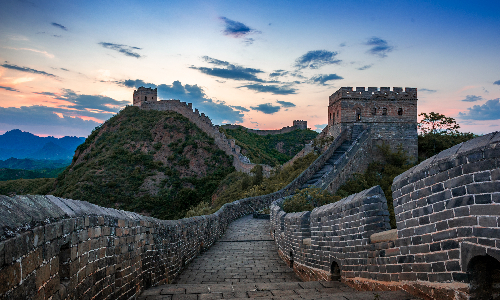
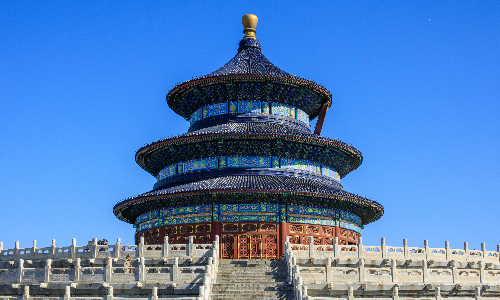
 Luoyang
Luoyang After breakfast, you will be transferred to the high-speed railway station and head to Luoyang by taking the estimated high-speed train G653 07:43/11:57. With a long history and a total population of 7,170,200, Luoyang covers a total area of 15,230 square kilometers. During your Luoyang tour, you will get a full knowledge of it by visiting its major attractions, especially Shaolin Temple, the birthplace of Chinese Kung Fu.
In the afternoon, you will come to Longmen Grottoes. It is known as an art treasure with a large number of Buddhist grotto statues. Most of the grotto statues in Longmen Grottoes are made for royal families. It is said that the tallest Buddha – Lusena Buddha was designed for Wu Zetian, the only female emperor in the Tang Dynasty in China. With a total height of 17.14 meters, the Lusena Buddha is famous for its mysterious smile and is known as the “Oriental Mona Lisa”. At last, you will be taken to the hotel.
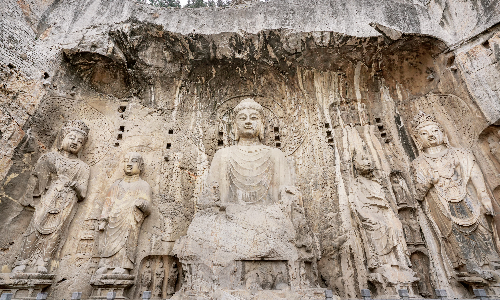
Today, the first stop is White Horse Temple, renowned around the world. It is the first government-run temple after Buddhism was introduced into China and is called the “No.1 temple in the world”. There is an ancient wishing well in the temple. With a history of thousands of years, it’s said that it can bring good luck and health to people. Therefore, many tourists come here and throw coins into the well to make a great wish for the future. You can try to do this to wish for a better life in the future.
Have you ever heard of Shaolin Kung Fu? It is the most representative and complete Kung Fu style. There is no doubt that it has become the major style for Chinese Kung Fu. If you are interested in Chinese Kung Fu, you must come to Shaolin Temple. Driving 47 kilometers northwest for 65 minutes, you will come to Shaolin Temple. At the foot of Shaoshi Mountain, about 300 meters west of Shaolin Temple, lies the Pagoda Forest, one must-visit attraction you can’t miss. It is the cemetery for highly accomplished Shaolin monks and abbots. Almost every pagoda here has inscriptions that have highly artistic attainment and appreciation value. After visiting Shaolin Temple, you will go back to the hotel to have a rest.

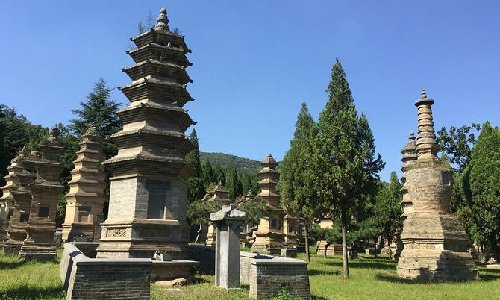
 Xi’an
Xi’an In the morning, you will take the estimated train K2045 09:21/14:58 to Xi’an. Your guide will wait for you at the train station and transfer you to the hotel. Today you will have a lot of free time to explore Xi’an by yourself.
Free Time Suggestion:
We suggest you visit the Great Tang All Day Mall which brings the ancient Chang’an (old name of Xi’an), capital of the great Tang Dynasty (618-907), back to life. Based on the Tang style elements, it is the best place to experience the Tang culture.
 Chengdu
Chengdu When you come to Xi’an, you can not miss the Terra Cotta Warriors and Horses Museum, about 40 kilometers northeast of Xi’an and 1 hour’s drive. It includes three funeral pits for Qin Shi Huang, the first emperor in the Qin Dynasty (221-207 BC). When it comes to Qin Shi Huang, he played an important role in ancient China. He ended the melee of the vassals and established the first unified feudal country in history. Besides, he standardized writing, currency, and measurement to promote national fusion, which has a positive impact on historical development. As the eighth wonder of the world, nowadays, the Terra Cotta Warriors and Horses Museum has been the best tourist attraction to demonstrate the prosperity of ancient Xi’an.
Then, you will go to the Big Wild Goose Pagoda, the most renowned Buddhist pagoda in Xi’an. Do you know what it was built for? In the Tang Dynasty, there was an eminent monk called Xuan Zang. In 629, he set off from Chang’an to ancient India to study Buddhism and came back in 645. Then, Xuan Zang presided over the construction of the Big Wild Goose Pagoda, to preserve and translate Buddhist scriptures taken from Tianzhu (ancient India) via the Silk Road.
Then, you will explore the Great Mosque, which is the biggest mosque in Xi’an and one of the most famous mosques in China. Chang’an in the Tang Dynasty was home to a large number of Muslims from Persia (Iran) and Dashi (Arabia). To satisfy the needs of those Muslims, Emperor Li Longji agreed to build the Great Mosque.
How can you ignore delicious food in Xi’an? The last stop of today is the Muslim Quarter, which is prestigious in China. There are almost 300 kinds of Hui-style snacks, including Pita Bread Soaked in Lamb Soup, Biangbiang Noodles, Rice and Mirror Cake, and so on. Mirror Cake, a traditional snack in Shaanxi province, is a round mirror-shaped cake made of steamed glutinous rice. You can add different condiments according to your taste, such as crushed nuts, raisins, etc. This is a unique snack in Shaanxi, and it is worth tasting.
After finishing today’s visit, you will be transferred to the train station to take the estimated train K385 21:08/08:03+1 to Chengdu. Taking the overnight train will not only allow you to have a good rest at night but also reduce the cost of accommodation. Your tour guide will pick you up at the train station in Chengdu and transfer you to the hotel.
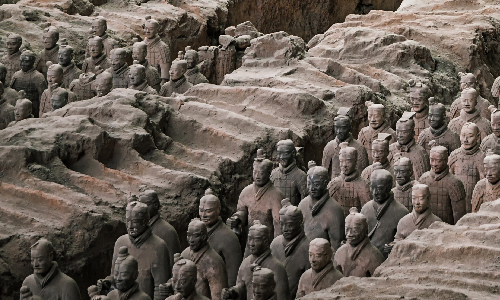
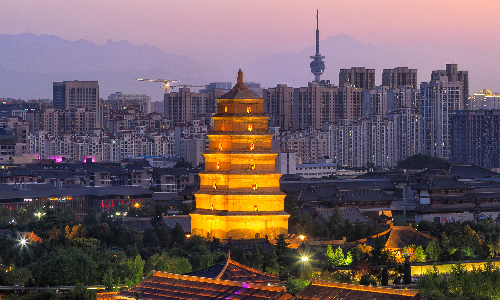
When you come to China, how can you miss the giant panda, a national treasure? After breakfast, you will visit the Chengdu Research Base of Giant Panda Breeding, the world-famous protection base for giant pandas. You must be attracted by pandas’ cuteness. As we all know, pandas are gentle and lovely and like to be alone. When they first see you, they may cover their faces with forefeet due to shyness. Therefore, pandas are called “Miss Panda”. However, when a panda becomes a mother, she will protect her baby pandas regardless of her gentle image, which makes people can’t help praising, “What a great maternal love this is!”
In the afternoon, you will come to the People’s Park. The Heming Teahouse is the most popular place in People’s Park, where you can drink tea and experience the tea culture of Chengdu by yourself. People always say that a tea table, a bamboo-made chair, and a cup of tea are the traditional tea-drinking standard for Chengdu people. People who drink tea here often talk about everything from daily trivialities to national affairs. Now the Heming Teahouse has become an important place for people to relax, socialize and entertain.
Then, you will visit the Wuhou Temple to memorize Zhu Geliang. Have you heard of Zhu Geliang? He was the prime minister of the Shu Kingdom during the Three Kingdoms period (220-280), but also an excellent politician, military strategist, writer, and inventor in ancient China. He vividly demonstrated loyalty, filial piety, righteousness, and resourcefulness. Zhu Geliang dedicated his life to helping Liu Bei (the leader of the Shu Kingdom) to stabilize his regime. And the descendants gave him a high evaluation and regarded him as a representative of loyalty and the Wuhou Temple was established in memory of him.
Chengdu food is famous worldwide. The last stop of today is the time-honored Jinli Street famed in the Qin dynasty. Chengdu’s food is a bit spicy, but the spicy food here is different from other places. For instance, the Sichuan Hot Pot uses chili and Sichuan peppercorn to make the vegetables and meat boiled in the pot more palatable. You will not forget it after you taste it.
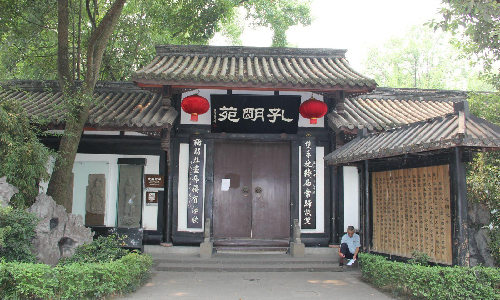
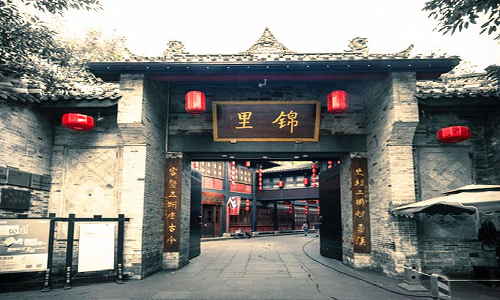
After breakfast, you will visit the Leshan Giant Buddha. With a height of 71 meters, it is the biggest stone statue. What makes people surprised is the secret drainage system of the Leshan Giant Buddha. There is a set of ingeniously designed and invisible drainage system behind the ears and the head of the Leshan Giant Buddha. Besides, drainage ditches on the collar and creases of the Leshan Giant Buddha also play an important role in protecting the Buddha from being eroded by the rain. Seeing these, you must be amazed by the wisdom of Chinese people.
Continue to go north 152 kilometers for about 130 minutes, you will get to the Huanglongxi Ancient Town. I’m sure that everybody hears of Hollywood, and the Huanglongxi Ancient Town is called “Hollywood in China”. There are ancient trees, temples, wharves, and folk houses in the ancient town, as well as old folk customs remaining here. Everywhere is full of antique flavor. Therefore, many film crews are attracted to come here, and more than 100 films are shot here. You may meet some film stars if you are lucky. And you are allowed to take photos here. If you share these photos on Instagram, Twitter, or other social media, a lot of new friends may be attracted by your pictures and follow you.
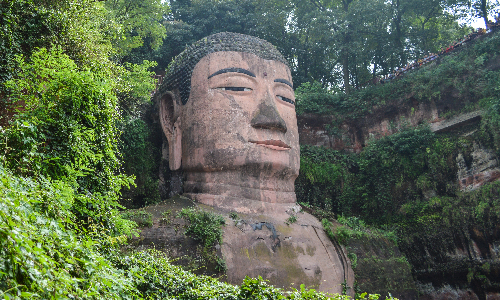
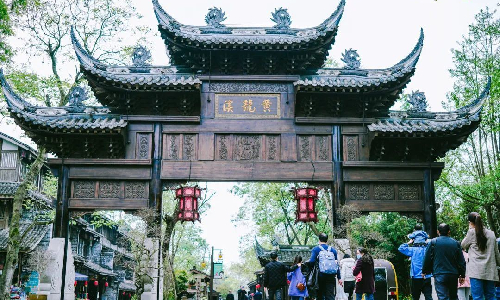
 Shanghai
Shanghai Today, you will have a free morning. You can choose to have a rest in the hotel or to visit other attractions.
In the afternoon, you will take the estimated flight MU5418 16:00/19:00 to Shanghai. Upon arrival, your Shanghai tour guide will pick you up and then transfer you to the hotel. Covering an area of 6,340.5 square kilometers, Shanghai is a metropolitan city with a population of 24,870,900.
The first stop is the Jade Buddha Temple, which is famous for enshrining two Jade Buddha statues. Located in the bustling downtown area of Shanghai city, it is quiet and is hailed as a piece of pure land in the big city. The jade bears the meaning of a beautiful marriage, so many young people are attracted to visit the Jade Buddha Temple. If you are single, you can try to worship the Jade Buddha and pray for a good marriage as well.
Then, you will be taken to the Yu Garden (closed each Monday), the private garden of Pan Yunduan who was a high-level official during the Ming Dynasty. When you enter the Yu Garden, you may notice a large exquisite stone, which is the treasure of the Yu Garden, named Exquisite Jade Rock. Does anyone know how it comes here? It was said that Emperor Zhao Ji (the eighth emperor of the Song Dynasty) was willing to collect rare flowers and stones, but this stone was lost when transported to the capital. Then, an officer, Chu Yu got it. When Chu Yu’s daughter married Pan Yunduan’s younger brother, Pan Yunliang, the stone was given to Pan as a dowry.
Then, you will come to Shanghai Old Street, which is a multi-functional street in the Yu Garden Commercial Tourism Zone. It combines tourism, shopping, and entertainment. The earliest banks, gold shops, restaurants, and theaters in Shanghai were located here. When you enter Shanghai Old Street, you seem to have returned to the bustling market of Shanghai 100 years ago.
After that, you will ascend Oriental Pearl TV Tower. With a height of 468 meters, the landmark Oriental Pearl TV Tower in Shanghai is the second tallest tower in Asia and the fourth tallest in the world. You can overlook the whole scenery of Shanghai in the Oriental Pearl TV Tower. In addition to the extremely high tourism value, the Oriental Pearl Tower has also become a significant place for public welfare undertakings. Every March 8th, the Oriental Pearl TV Tower lights up pink lights to call on the whole society to care for women. Every April 2nd, the Oriental Pearl TV Tower will light up blue lights to call upon society to pay attention to people with autism.
Then, you will come to the Bund which is 1.5 kilometers long on the west bank of the Huangpu River. Located in the Bund, Huangpu Park enjoys great fame in China. Built in 1868, Huangpu Park is the earliest European-style garden in Shanghai, and it has witnessed the development of the Bund. The People’s Heroes Memorial Tower standing in Huangpu Park, which is 60 meters tall, is built to commemorate the heroes who died in the war. Here you can learn that unforgettable history.
Finally, you will visit Nanjing Road, one of the most prosperous business streets in the world. And Park Hotel stands here. The significance of Park Hotel is not that it has maintained its reputation as the tallest building in the Far East for decades, but that the first building was funded and invested by a group of Chinese bankers. It has made the Chinese people more ambitious and confident under the special historical background.
After today’s visit, you will be transferred to the hotel.
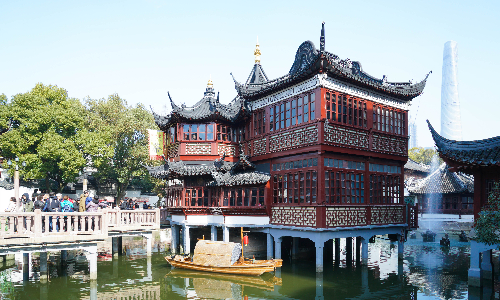
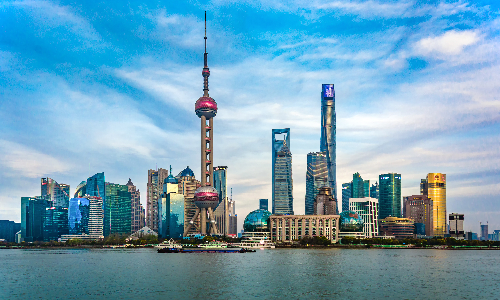
Today is the last day of your 12-day cost-effective China tour, and the guide will escort you to the airport, where you will take a flight back to your country. I hope you will enjoy this value-added journey, and I hope you will have an unforgettable memory during this time.
Author: Lin Shuyun
Proofreader: Vivian Zhou
| City | Five Star hotel list | Four Star hotel list |
|---|---|---|
| Beijing | Sunworld Dynasty Hotel Beijing Wangfujing | Sunworld Hotel Wangfujing |
| Luoyang | Lee Royal Hotel Mudu | Xinyuan International Hotel |
| Xi'an | Tianyu Gloria Grand Hotel Xi'an | Sunworld Dynasty Hotel |
| Chengdu | Sofitel Chengdu Taihe | Holiday Inn Express Chengdu Jinniu |
| Shanghai | Ocean Hotel Shanghai | Courtyard by Marriott Shanghai Central |
 |
![]() About your child or infant, please contact us for a discounted price.
About your child or infant, please contact us for a discounted price.



We started with a few days in Beijing & ended in Shanghai, from where we visited the Forbidden City and Great Wall. In between we visited Terra Cotta Warriors Museum, Panda Base, Shanghai Disneyland.

We had a wonderful holiday in China which will remain long in the memory. China is a breathtakingly beautiful country full of splendid temples and palaces, mountains and rivers, peaceful rural scenes and bustling shopping streets.
 QUICK ENQUIRY
QUICK ENQUIRY